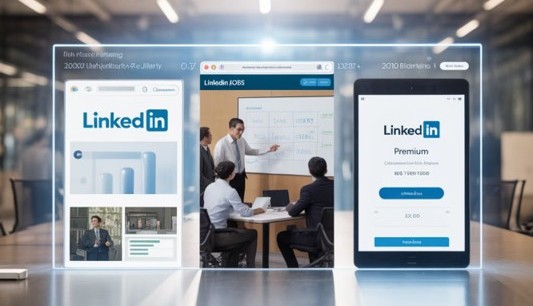From Independent Social Network to Corporate Platform
Since its acquisition by Microsoft in 2016 for more than $26 billion, LinkedIn has ceased to operate as a publicly traded company and has become a wholly owned subsidiary of the group.
This shift was not only financial but also strategic: since then, LinkedIn has no longer sought to optimize its profitability in isolation, but rather to contribute to Microsoft’s broader corporate objectives.
The End of Financial Autonomy
Before the acquisition, LinkedIn was accountable to its own shareholders and published quarterly results. Today, its figures are consolidated within Microsoft’s Productivity and Business Processes segment, alongside Office 365, Dynamics, and Teams. This means its performance is no longer evaluated independently, but as part of the group’s overall impact.
A Strategy Aligned with the Microsoft Ecosystem
Although LinkedIn maintains its brand and a certain level of operational autonomy, any decision related to investment, innovation, or monetization must align with Microsoft’s global strategy. Its mission is no longer just to connect professionals, but to enhance productivity and data flows that feed into other products across the group.
Synergies as a Source of Value
Naturally, being part of Microsoft has strengthened LinkedIn’s ability to generate synergies:
- Integration with Microsoft 365 and Dynamics to enhance commercial and B2B relationship capabilities.
- Use of Azure as the technological foundation for scaling its global infrastructure.
- Incorporation of AI (Copilot) trained with professional data from LinkedIn, improving the relevance and personalization of its services.
- Cross-monetization through LinkedIn Learning, B2B advertising, and Premium subscriptions, reinforcing the user network within Microsoft’s ecosystem.
Profitability in Service of the Group
LinkedIn’s profitability is no longer measured solely by its revenue or active users, but by its capacity to strengthen Microsoft’s competitive position against giants such as Google, Salesforce, and Meta.
Its role is both economic and strategic: to generate data, insights, and competitive advantages that extend Microsoft’s reach in productivity and business intelligence.
The New Course: Profitability, Users, and Coexistence
In this new context, LinkedIn’s strategic adjustments also reflect the pursuit of greater profitability and relevance, in response to the evolution of its user base.
The platform has sought to adapt to new behavioral dynamics: more frequent, more social, and more emotional usage — aligned with what a segment of professionals now expect from a digital environment — visibility, connection, and recognition, beyond purely professional value exchange.
And here lies the challenge: how do we manage the coexistence between these two profiles?
On one hand, there is a segment that wishes LinkedIn would remain a space centered on professional development, knowledge sharing, and quality networking, consistent with its founding objectives.
On the other hand, there is a growing group pushing for an “emotional socialization” of content, where personal storytelling, emotion, and individual brand-building dominate the tone of conversation.
“This tension defines LinkedIn’s current moment: an unstable balance between what it once was, what Microsoft needs it to be, and what its users want it to become.”
LinkedIn is no longer an independent professional network — and that has consequences. It is now a key component of Microsoft’s strategic architecture, designed to create networked value, connect products, and strengthen the group’s global position in the digital economy.
But in that process, it also redefines — day by day — what “professional” means in the age of attention. As with any transition or transformation, the undeniable challenge it now faces is the cohabitation of segments with different sought benefits—each pursuing distinct kinds of value.
[In marketing, “sought benefits” refers to the attributes, advantages, or outcomes that consumers expect to gain when purchasing a product or service. These benefits drive their decision-making and can be functional (what the product or service solves and how), emotional (e.g., a sense of security), or symbolic (e.g., status). Understanding these benefits is essential, as it enables the design of tailored, relevant, and persuasive solutions.]



